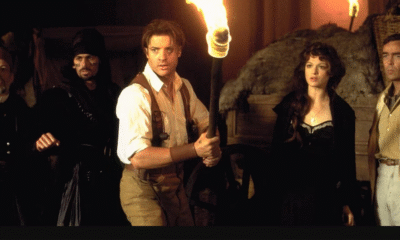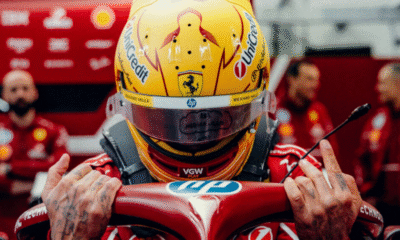Animation
Phil Tippett’s Mad God: A Visionary Descent into Stop-Motion Madness
In an era dominated by sleek CGI and polished blockbuster visuals, Phil Tippett’s Mad God stands defiantly alone—an unfiltered, hallucinatory plunge into a world of decay, torment, and apocalyptic beauty. Released in 2021 after three decades in the making, Mad God is more than just a film; it is the culmination of a singular artistic obsession that cements Tippett’s legacy as one of cinema’s most daring visionaries.
Phil Tippett, a legend in the field of visual effects, helped bring Star Wars, Jurassic Park, and RoboCop to life. But Mad God is his passion project, a stop-motion descent into madness that was nearly lost to time. Phil Tippett began working on the film in the late 1980s, only to shelve it during the digital revolution of the 1990s. It wasn’t until a group of younger artists at his studio encouraged him to resurrect the project that Mad God was reborn. With help from crowdfunding and volunteers, Tippett painstakingly brought his dystopian vision to life over three decades.
The film follows a silent, gas-masked figure—known only as The Assassin—as he descends through a grim, industrial hellscape in a rusted diving bell. There is little in the way of conventional narrative; instead, Mad God unfolds as a grotesque symphony of decay, destruction, and despair. Each new level of the world the Assassin traverses reveals another layer of humanity’s failure, rendered in meticulous stop-motion detail.
Visually, Mad God is a triumph. Phil Tippett’s handcrafted sets and creatures pulse with grotesque beauty. From squirming homunculi to towering flesh monsters, the world feels alive and diseased—more nightmare than reality. The film’s sound design, composed of mechanical groans, guttural cries, and eerie silence, adds to the suffocating atmosphere. It’s a place where language fails and only sensation remains.
But Mad God is not simply horror for horror’s sake. It’s a meditation on creation, destruction, and the cruelty of progress. Phil Tippett’s bleak vision mirrors civilisation’s worst impulses: war, exploitation, and ecological collapse. Critics have likened the film to the works of Hieronymus Bosch, Francis Bacon, and Jan Švankmajer—a collage of grotesque surrealism filtered through apocalyptic stop-motion.
Despite its disturbing content, Mad God received widespread acclaim for its artistic audacity. Premiering at festivals like Locarno and Fantasia, it later found a wider audience through streaming platforms. For many cinephiles, it became a cult phenomenon, revered not just for its aesthetics but for the sheer endurance and passion it took to make. Now in his seventies, Phil Tippett has said the film nearly broke him. Watching it, one understands why.
Mad God is not a film for everyone—it’s abrasive, abstract, and relentless. But for those willing to surrender to its descent, it offers a uniquely harrowing experience. It reminds us that even in an age of infinite pixels, the handmade still carries unmatched power.
More than thirty years in the making, Mad God is Phil Tippett’s magnum opus: a monstrous, magnificent dream dragged straight from the depths of his subconscious—and ours.







































